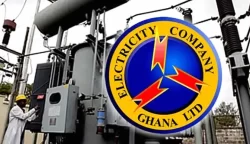The Non-Performing Loans (NPL) ratio reduced to 23.6% in April 2025 from 25.7% in April 2024, BoG says in its May 2025 Banking sector Development Report.
The decrease in NPL ratio was attributable to higher growth in total loans relative to growth in NPL stock. The banking industry’s NPL stock grew by 8.7% to GH¢21.7billion in April 2025, up from GH¢20billion for April 2024.
As expected, the private sector accounted for a larger share of non-performing loans in line with its larger share of industry credit.
The proportion of NPLs attributable to the private sector picked up to 93.4% in April 2025 from 91.0% in April 2024, while that of the public sector decreased to 6.6% for April 2025 from 9.0% in the same period of 2024.
A high ratio of non-performing loans (NPLs) in Ghana’s banking sector is indeed threatening the industry’s stability and growth. The NPL ratio, which represents the proportion of loans that are not being repaid, has been on the rise – with some reports indicating it is at a concerning level.
High NPLs erode bank capital, reduce profitability through decreased interest income and can limit the ability of banks to lend further. This can hinder economic growth and development, especially for businesses relying on bank loans.
The rising NPLs also pose a threat to overall financial stability of the country. If banks become unstable due to high NPLs, it can create a ripple-effect and impact the broader economy.
Consequently, the Bank of Ghana has indicated plans to cap the NPL ratio at 10% by December 2026, highlighting the situation’s seriousness and need for intervention.
Persistent challenges with loan recovery continue to undermine the financial sector’s ability to lend freely – contributing to higher interest rates and a constrained credit environment, especially for individuals and businesses that need the facilities most.










